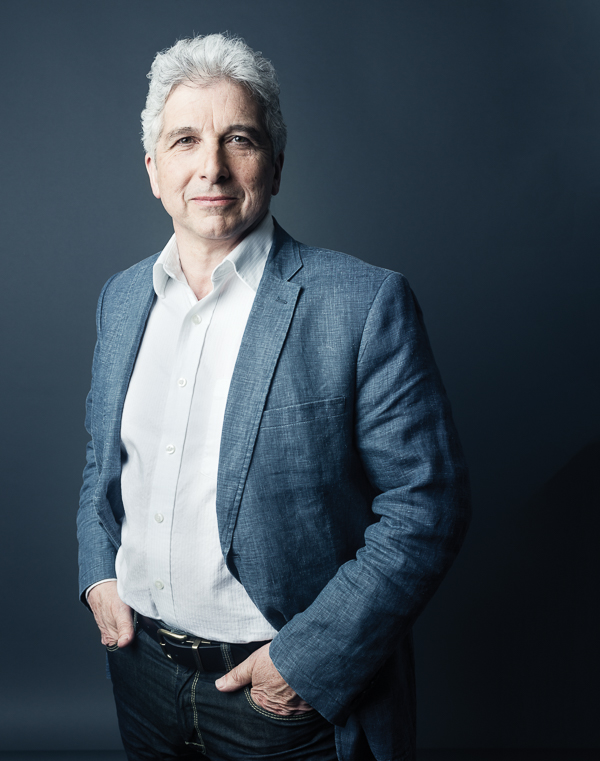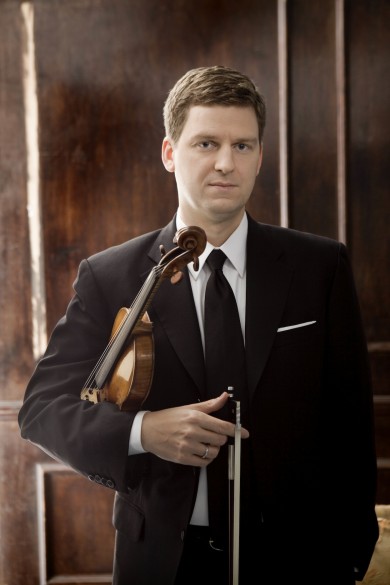Oundjian, New World Symphony close the year with a lavish Russian feast
An all-Russian orchestral program always promises to be a treat for the audience, and the New World Symphony’s weekend program led by Peter Oundjian did not fall short of that expectation.
Sunday afternoon’s concert at New World Center opened with the festive Overture to Ruslan and Ludmilla by the early master of Russian opera, Mikhail Glinka, led by conducting fellow Dean Whiteside in a compelling interpretation. The orchestra reacted to Whiteside’s swift gestures with youthful energy, well suited to the character of the music. Besides the marginally rushed final bars, the playing exhibited tight virtuosic string playing, well-balanced textures, and expansive phrasing in the cantabile sections.
Fast-forwarding nearly 100 years, Dmitri Shostakovich’s First Violin Concerto brought us to a score depicting a world of oppression, intensity, sarcasm, and introspection. It was clear that conductor Oundjian and soloist James Ehnes shared similar interpretive ideas throughout. The soloist’s impeccable technique and artistic maturity, partnered with Oundjian’s non-invasive conducting, honored the music by letting it speak powerfully for itself.
The introspective opening Nocturne allowed for Ehnes to explore a wide range of tone colors. In his hands, the 1715 “Marsick” Stradivarius resonated with a voice-like quality, sensitive vibrato, and soaring high notes. The Mephistophelian Scherzo proved easy for the virtuoso violinist, and a showcase for his outstanding bow control.
The extended Passacaglia got off to a somewhat rocky start with attacks not fully landing together and the orchestra failing to communicate the music’s gravitas. Yet the playing soon found its footing, and proceeded to a heart-wrenching interpretation. The dialogue between solo violin and bassoon was beautifully rendered with a great sense of breadth in each phrase. The colossal cadenza showcased Ehnes’ prowess on the instrument and his profound musical understanding as he layered the sounds with increasing intensity. The final Burlesca, equally demanding for the soloist and the orchestra, concluded in commanding, powerful fashion.
Sergei Rachmaninoff’s Symphony No. 2 in E minor proved the perfect closing music for the afternoon. Oundjian enabled the orchestra to blossom, starting with the brooding opening of the first movement, which highlighted the warm opulence of the lower strings along with an evocative English horn solo. The second movement brought out the dark, yet invigorating scherzo character with its underlying Dies Irae motif, though the quick, softer passages lacked something in drive and articulation.
The Adagio was one of the most successful moments of the afternoon, as the New World players delivered a heartfelt performance, capturing the lyricism of the melodic contours. The intertwined woodwind lines flourished gracefully over the expansive string legatos. Clarinetist Zach Manzi offered a touching solo with a rich tone, stunning phrasing, and natural expressiveness. The coda was mesmerizing with the carefully placed pizzicatos.
The glorious Allegro vivace finale filled the hall with vibrant resonance, triumphantly shifting to E Major. The orchestra thrived in this exuberant music, guided by Oundjian’s engaging and collaborative direction.
Inesa Gegprifti is the co-founder of Kaleidoscope MusArt, and a DMA candidate in piano performance and pedagogy at the University of Miami’s Frost School of Music.
Posted in Performances
Leave a Comment
Mon Dec 12, 2016
at 11:55 am
No Comments

